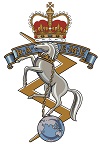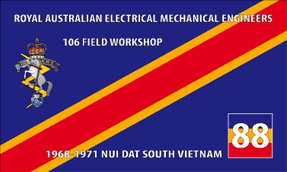1969
Trialing a new sight for the M79 Grenade Launcher
Milton C. W. Pearson, CSM, 106 Field Workshop, 1968-1969
A RAAF Sergeant instrument tradesman had designed a replacement sight system for the M79 Grenade Launcher and 106 Field Workshop had been asked to carry out a field trial. The OC, Claude Palmer, informed me that a Flight Sergeant Keith Evans was due to arrive from 2 Squadron Phan Rang and I was to conduct a field firing program with the modified sight system and report on its benefits compared to the built sight system.

This weapon was the first designed to fire spin-stabilised grenades. It was intended to bridge the gap between the maximum throwing distance of a hand grenade and the minimum range of the Mortar. It was also intended to be used in close combat. It had an effective range of 50 to 300 metres. I had used three types of 40mm calibre ammo; High Explosive, Anti-personnel and Smoke. I believe there was also a gas round, (CS crystals) but I had no experience with it.
One of the uses for this weapon to flush out a snipers, etc, by causing them to move and be detected. However, if you could not see your fall of shot, then, firing was almost a waste of time; the sound effects would scare no one
As can be seen in the picture, the bridge sight at the back was folded down to lay flat along the launcher's 40mm tube. When the target and it's range was decided, the bridge sight was raised, thumb screws used to loosen the sight bar, and the adjustments made; range markings being inscribed on the metal bridge for ranges from 100 to 400 metres. In practise, if you were firing on target at 400m and then had to adjust down to 300m the process of adjusting the sight was quite slow and cumbersome. I might add that most experienced operators simply guessed the elevation using the angle of the launcher itself, mainly because the sight system was so cumbersome and, if left raised, provided another protusion easily caught up in undergrowth.
The sight invented by the RAAF instrument sergeant was made of perspex and resembled, when raised, the wings of a butterfly. It did not require adjustment. I simply called the invention the butterfly sight system.
The inventor did not come to Nui Dat and the shoot was carried out with a Flight Sergeant from the Aerodrome Defence Group. Live firing was conducted on the range using HE rounds, although I fired one round of smoke just to look at the drift due to the wind prior to the test.
During the course of the shoot a range was simply given from a neutral observer and I would adjust the weapon as designed. The ratio was at least 3 : 1 in favour of the butterfly sight system. The perspex sight had the elevation marked so in effect it was simply open sight adjustment as each distance was called out.
What happened with this invention, I don`t know, and, whether 106 actually wrote a technical report, is not known either. Still we were at war.
The weapon is out of service now, I understand, and may have been replaced with the M203

